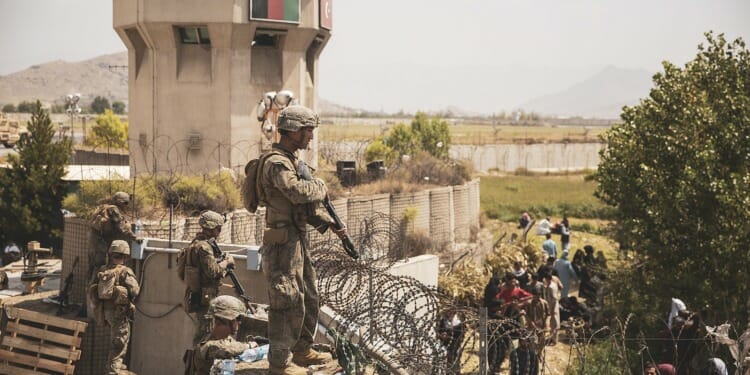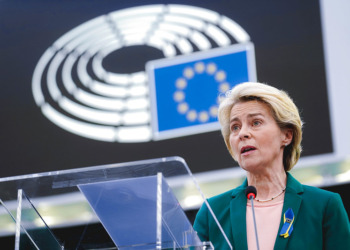As the crisis in Afghanistan deepens and the Taliban cements its grip on the nation, extensive evacuation measures undertaken by the world’s leading economies are highlighting the urgency and uncertainty that persists in the war-torn region. In some countries in Europe, reluctance to accept Afghan refugees is only adding to the problem.
According to official statements and local reports, over 28,000 people have now been evacuated from Afghanistan. Over 18,000 Afghans have applied for VISA’s to the United States alone, with tens of thousands more waiting desperately to flee the nation at Kabul Airport. However, a strict evacuation deadline of August 31 has been imposed on the nation by the Taliban. Described as a “red line” by a Taliban spokesman, the group threatened of “consequences” if evacuation efforts in the nation continued past the end of the month.
And as the harsh deadline rapidly approaches, the urgency of evacuation measures have reached tangible levels. The British Defence Minister Ben Wallace has warned that the nation’s evacuation efforts have come down to a matter of “hours now, not weeks”, insisting that British troops will be forced to leave alongside the US unless the deadline is moved.
Despite reports that Prime Minister Boris Johnson will urge US President Joe Biden to attempt to extend the evacuation deadline in Afghanistan during an emergency virtual meeting of G7 leaders on August 24, the Taliban has contended it will not agree to an extension, and any attempt to prolong the stay of UK and US troops in the region could “provoke a reaction” from the group.
Through nationwide desperation and uncertainty, the August 31 deadline has led key nations to drastically step up their evacuation efforts amid the threat of further destabilisation in the region.
Evacuations to get US citizens and at-risk Afghans out of Taliban-controlled Afghanistan accelerate as President Biden warns of ‘acute’ security threats https://t.co/t5GrgvB8Pr
Follow this thread for the latest
pic.twitter.com/jDVbLiLhYv
— Al Jazeera English (@AJEnglish) August 23, 2021
NATO foreign ministers convened on August 20 to discuss evacuation measures, agreeing that its priority would be the immediate evacuation of NATO members, allied nationals, and Afghan refugees. The situation in Afghanistan will require a massive coordinated effort from the international body through a dynamic that has been described as “very difficult and unpredictable” by NATO Secretary-General Jens Stoltenberg.
A main strategy of NATO’s evacuation efforts is via the deployment of military aircraft to Hamid Karzai International Airport in Kabul, as well as nearby nations outside of Afghanistan. Stoltenberg told reporters during a virtual press conference on August 17 that concerted air evacuations were working around the clock to complete the evacuations “as soon as possible”, as the rapidly approaching deadline has forced NATO to attempt to sure-up an air-bridge with neighboring nations to provide safety to those fleeing the conflict-stricken region.
Meanwhile, Germany’s armed forces have also sent two Airbus H145M helicopters to Kabul specifically to search and pick up evacuees from within the city and take them to the airport, whilst numerous other nations including France, Italy, Spain and the Netherlands have also enlisted their air forces as part of NATO’s coordinated evacuation effort.
Related Articles: Will Afghanistan Fuel a New Migrant Crisis? | Taliban Take Kabul: “War is over in Afghanistan”
US President Joe Biden has faced unsparing criticism over the US withdrawal from Afghanistan over the past two weeks, yet insisted in a speech on August 22 that he stood by his decision to withdraw from the nation and touted the “extraordinary” scope of the evacuation efforts that have been undertaken by the American government.
The President stated that approximately 11,000 people were evacuated over a 30-hour time frame over the weekend, reiterating: “I will say again today that I have said before: Any American who wants to get home will get home.”
Vice President Kamala Harris said during a visit to Singapore that the U.S. was focusing on evacuation efforts taking place in Afghanistan and that there would be plenty of time to analyze the context of the troop withdrawal https://t.co/3D24Dm7Lkg pic.twitter.com/pYvc22s43n
— Reuters (@Reuters) August 23, 2021
The Pentagon announced on August 22 that it was activating the Civil Reserve Air Fleet, a rarely used program, to bolster its departure strategies. The program, which will see six commercial airlines lend planes to the federal government, was ordered by US Defence Secretary Lloyd Austin for only the second time in US history.
Austin told ABC’s This Week that the United States was doing its “very best to get everybody, every American citizen who wants to get out, out. And we continue to look at different ways – creative ways – to reach out and contact American citizens and help them get into the airfield.”
Austin also expressed that the evacuation measures will extend to those at risk of Taliban retribution for working for the US government, military, or media, stating that “the people that are in the Special Immigrant Visa program are very, very important to us … we want to evacuate them as well.”
The advanced US evacuation efforts have also been touted by Secretary of State Anthony Blinken, who told CNN’s State of the Union that the government was actively searching to secure the safety of several thousand US citizens that remained in the nation. Whilst Blinken assured that the US were “working hard to make arrangements with each of those people [we have contacted] and make plans to get them out,” he admitted that the precise number of Americans left in Afghanistan remains unknown.
Biden pointed to the collaborative efforts of America’s NATO allies in aiding evacuations out of Afghanistan, with many key nations saying they will welcome large numbers of refugees as a result. Included in this is Canada, who will resettle 20,000 Afghans, Germany, which will welcome up to 10,000, and the UK, which recently announced a plan to take in 20,000 refugees over 5 years.
The British Ambassador to Afghanistan, Sir Laurie Bristow, announced that nearly 6,000 Britons and eligible Afghan citizens had been evacuated since August 13, whilst Blinken has stated that 13 nations have agreed to serve as transit nations to temporarily host Afghan refugees for the United States.
Watch my update on the UK evacuation effort, which is gathering pace. Huge efforts from our soldiers, diplomats, border force colleagues, and all who are supporting us back in the UK. pic.twitter.com/qEj4gB1omz
— Laurie Bristow (@laurie_bristow) August 22, 2021
However, some EU nations have shown a reluctance to welcome refugees. Several governments recently lobbied the EU Commission to ensure deportations of asylum seekers whose visa requests failed, while, Slovenia, the current host nation of the rotating council presidency, insisted that the EU should not open humanitarian corridors to help refugees. Without a coordinated approach to the evacuations, an already gargantuan task and a race against the clock becomes even more challenging.
As the “red line” evacuation deadline rapidly approaches, assuring the safety of those fleeing from the war-torn region should be of paramount importance.
On one hand, numerous nations have already pledged to welcome substantial numbers of Afghan asylum seekers, yet on the other hand, reluctance and fear of a repeat of the 2015 migrant crisis could undermine evacuation efforts and create an unsustainable dynamic. Attempting to control the situation in Afghanistan amid Taliban threats for missing the evacuation deadline whilst avoiding another migrant crisis will be a balancing act that one can only hope will not result in further violence.
Editor’s Note: The opinions expressed here by Impakter.com columnists are their own, not those of Impakter.com. — In the Featured Photo: US Marines assisting with evacuation efforts at Hamid Karzai International Airport, August 2021. Featured Photo Credit: Wikimedia Commons.










